The First AMWF Anime Ever: Tada-Kun Never Falls in Love
When I first heard of the title “Tada-Kun Never Falls in Love,” it sounded really bad–even for anime.
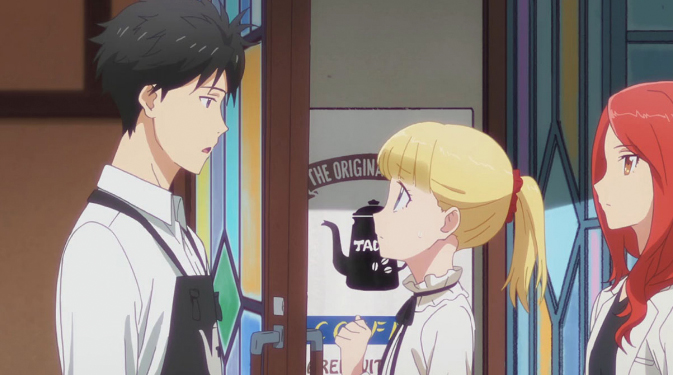
I only started watching it because, somewhere on the internet, I found a clip of the show that really piqued my interest. I can’t find the exact clip (dammit!), but basically it involved a foreign, blonde woman approaching a young Japanese man and asking him to take her photo (she asks in perfect Japanese).
He then begins to freak out and speak really bad English, saying that it’s hard for him to communicate without Japanese.
“Oh,” she cocks her head and looks at him. “Does my Japanese sound strange? Is it incorrect?”
“Um,” he replies in Japanese. “No. Not at all.”
My first thought after watching this clip was:
Wow, I have been the foreign girl in that situation more times than I can count.
My second thought after watching this clip was:
Oh my god! Her reply is BRILLIANT! I’m totally going to say that in Japan next time someone responds to my Japanese with really bad English.
My third thought was:
Holy shit, is this an actual anime about a foreign woman (not just some blonde anime character) and a Japanese man falling in love?
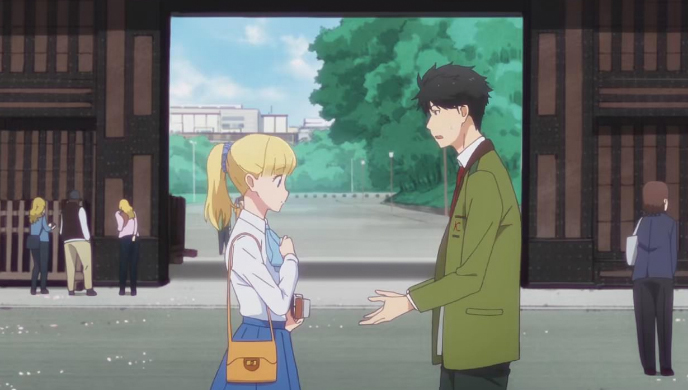
Thanks to the above clip, I decided to give “Tada-Kun Never Falls in Love” a chance. Tada-Kun basically chronicles the story of Tada Mitsuyoshi, a strapping young lad who works at his grandpa’s coffee shop and wants to someday be a photographer. He stumbles upon Teresa, a blonde foreign woman, while taking photographs in a park. Eventually their paths cross again once he finds out, coincidentally, Teresa is an exchange student at his local high school. Oh, she also happens to be living right next door to his coffee shop while staying in Japan. Talk about destiny, eh?
Anyway, it’s a very slice-of-life show that tells the story of Teresa’s time in Japan and her newfound Japanese friends (Tada and the photography club). It’s a corny show (cue the sakura petals and wind blowing in hair) and is pretty goddamn ridiculous (Teresa is European royalty–wtf?), but there are some real positive aspects to the show that I just have to highlight.
It Doesn’t Focus on “Foreign”ness
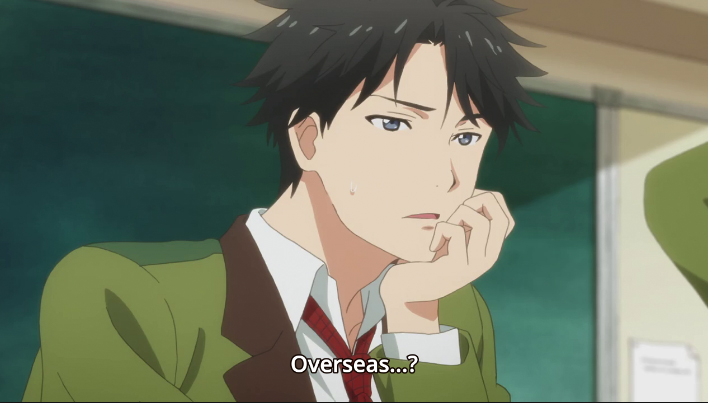
It’s hardly mentioned that Teresa is a foreigner–in fact, her Japanese classmates treat her just like anyone else. Maybe this isn’t realistic… but I really like it. In fact, I think this is how stereotypes about foreigners will gradually go away in Japan: by showcasing more foreigners in media where they are not treated like circus animals.
Tada never asks Teresa if she can use chopsticks. He never comments on her Japanese ability. He doesn’t even comment on her foreign physical features–he just LIKES the girl for who she is–not where she is from. I can’t tell you how refreshing it is to see Japanese media that doesn’t highlight all the cultural differences of how foreigners don’t fit into Japan. This anime does a great job of showing a foreign woman fit seamlessly into Japanese society…. with a Japanese man accepting that fact, no questions asked.
Tada and Teresa are Boring, but Likable
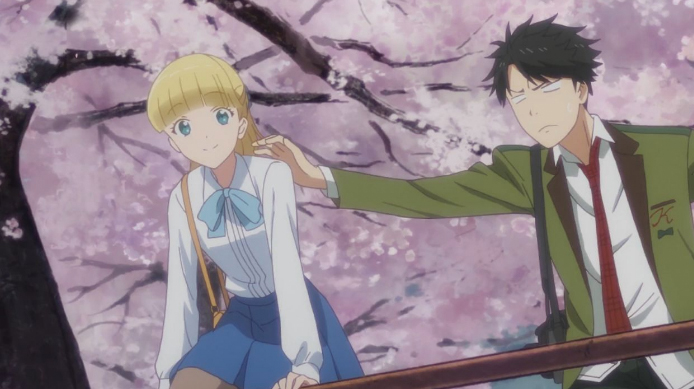
Teresa, despite being a supposed foreigner, acts like a typical Japanese girl. She’s cute, demure, polite and has a high-pitched squeaky voice. While she may not be all that interesting and a little dense, she’s definitely not a detestable character.
I’m a fan of Tada; although I do admit, he’s kind of vanilla as well. Still, he’s a good guy with dreams and aspirations and treats Teresa and his friends/family very well. Although it’s somewhat unrealistic, he’s also very open for a Japanese man. He tells Teresa his heart’s deepest, darkest secrets (despite her being a foreigner!) and she listens with a smile. It’s cute.
Hints at Japan’s Internationalization
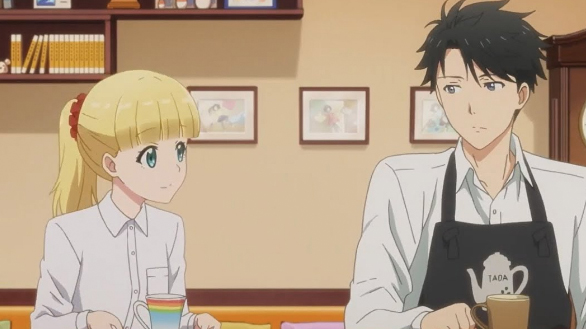
With a declining population, labor shortage, and rise of tourism–Japan is seeing (and needing) more foreigners than ever. The amount of foreigners that I saw in Japan while traveling in 2016 is almost double compared to when I lived in Niigata in 2010.
It’s a fact that there are way more foreigners in Japan now. While most foreigners don’t stay in Japan for the long-haul, all the short-term tourists are helping the Japanese people become a little more accustomed to seeing and interacting with foreigners. To take it a step further, I think Japanese people are even starting to realize that within this crowd of tourists/exchange students/overseas workers, there are actually a good number of assimilated, Japanese-speaking foreigners–just like this anime highlights.
Honestly, if the interaction between Teresa and Tada were the norm in Japan I probably wouldn’t have left. This anime presents an alternate-Japan I someday hope becomes reality.
Finally… Should You Watch This Show?
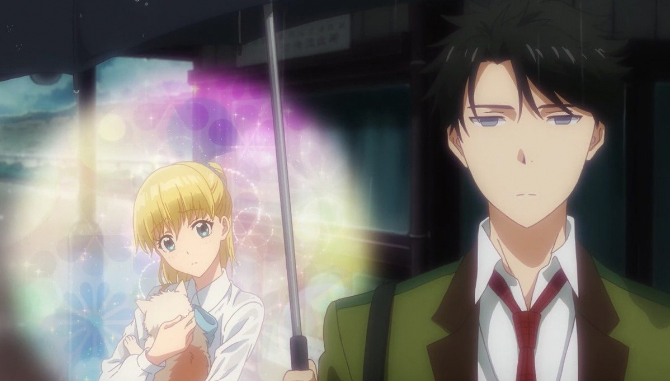
No. You shouldn’t. It’s shojo (girly-anime) garbage–but it’s better than most other garbage. There are still a lot of eye-rolling, anti-feminist anime moments in the show; but not enough to make me quit. Teresa and Tada have sucked me in and now I must watch until the very end.
Whether you watch Tada-Kun or not, one thing is for certain: this is a show that paints a very positive image of an AMWF relationship, as well as foreign-Japanese interaction in Japan.
Tada-Kun is now airing and can be seen on Crunchyroll, if interested.
13 thoughts on “The First AMWF Anime Ever: Tada-Kun Never Falls in Love”
Great cultural insights, as always.
Also, you made me laugh out loud, after building up this show, with this gem: “Should you watch this show?
No. You shouldn’t. It’s girly-anime garbage–but it’s better than most other garbage.”
Haha! Yes, it’s bad. My secret guilty pleasure.
Thanks for the analysis! It’s to hear that more foreigners are coming to Japan. I know that Thais now can travel there without a visa. I really hope to visit one day 🙂 and maybe I won’t shock the pants off of them when they hear and see me!
Haha I think if you go to Japan you might get spoken to in Japanese a lot (like that youtube video you posted on your latest post)! That can be both a good and bad thing 😉
I hope you can go, too! I saw quite a number of Thais in Japan (not as many as Chinese, but you know..), it’s definitely a must-go destination!
Foreigners treated like circus animals? Being asked for the 4894653th time if you can use chopsticks (after living there for years)? Being replied to in English when you asked in Japanese? I am seeing a lot of similarities between China and Japan, hahaha!
Haha, yes, I think China and Japan are a little similar 😉 Korea is probably the same too!
Do they ask if you can use chopsticks in China!? I wasn’t asked that so much in China, but in Japan it was like everyday… lol
Yes, I’ve been asked a lot if I can use chopsticks and if I am used to Chinese food. Usually people that eat with me for the first time ask. And then I’m like “Helloooo, I’ve been here for 12 years” xD
Actually the most well known AMWF couple in anime may also be the first in history:
Android 18 and Krillin from Akira Toriyama’s Dragon Ball Z franchise.
Does Andoid 18 count as Western female and Krillin an Asian male? lol
Why are you even asking this question when the answer is obviously “yes”.
Also Krillin and Android 18 are an older and better example of an amwf anime couple with them even getting married and having a daughter.
Well DBZ is a fictional world and the Tada-kun anime is actually set in what is supposed to be real-life Tokyo.
But, I know I am most likely missing on some great AMWF titles! So continue to correct me if I’m wrong!!
Itazura Na Kiss has an AMWF couple appear a bit later in the story and their romantic storyline becomes pretty prominent for a short time. Adaptations have been made in Japan, South Korea, Thailand and Taiwan.
Oh I’ve heard of this show but haven’t watched it!